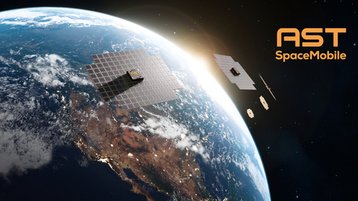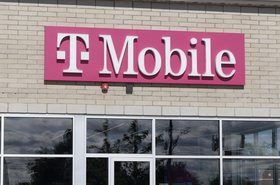US mobile carriers Verizon and AT&T have both paired with AST SpaceMobile to carry out direct-to-device (D2D) video calls.
The two operators separately announced the trials with AST SpaceMobile, which used the company's five low earth orbit (LEO) BlueBird satellites.
AST's BlueBird satellites launched in September.
The video calls come weeks after AST SpaceMobile paired with Vodafone to conduct a similar call in the UK.
AST received special temporary authority from the Federal Communications Commission (FCC) last month to test its satellite broadband network in the US.
To carry out the trial video calls, AST used AT&T and Verizon's 850MHz spectrum, which is compatible with standard smartphones.
AT&T noted that AST initiated the video call from Midland, Texas, to AT&T in Dallas, Texas. Verizon didn't provide details on locations.
“This breakthrough marks a new era in cellular to satellite connectivity in the United States that enables seamless data transmissions – not just texts - in the rare instance a terrestrial cellular network is not available,” said Hans Vestberg, Chairman and CEO of Verizon.
“Adding this layer of ability – not only to text someone, but to be able to call, video chat, or send files - whether in the wilderness, or in a remote part of a lake community, will only enhance the reliability of our customers' connectivity and communication experience.”
Founded in 2017, the company’s first test satellite, Bluewalker 1 was launched in 2019; Bluewalker 2 was canceled. Its latest test satellite, Bluewalker 3, launched in 2022.
AST was planning a constellation of almost 170 satellites; the first 20 were originally due to enter operation by 2023, with another 90 deployed through 2024. According to more recent press releases, it seems to have revised its constellation plans down to 100.
Verizon and AT&T, along with Vodafone, are all investors in AST SpaceMobile, rivaling Elon Musk's SpaceX Starlink.
Also this week, AST won a $43 million contract to support the United States Space Development Agency (SDA) as part of the company's plans to build out its LEO constellation.
Eutelsat's 5G NTN trial
Elsewhere this week, Eutelsat Group, MediaTek, and Airbus Defence and Space combined to claim the first successful 5G Non-Terrestrial Network (NTN) trial using the Eutelsat OneWeb low Earth orbit (LEO) satellite system.
According to Eutelsat, the tests highlight the potential of the 5G NTN standard, which could lead to future satellite and terrestrial interoperability within a large ecosystem, lowering the cost of access and enabling the use of satellite broadband for 5G devices around the world.
The test utilized Eutelsat OneWeb satellites and the MediaTek NR NTN test chipset, while Sharp and Rhode & Schwarz provided the antenna and test equipment, and Airbus-built satellites handled the connection.
A 5G device connected to the network via satellite and exchanged data successfully.
"5G NTN will be a key feature of the IRIS constellation. We are proud to be the first satellite operator to demonstrate the 5G air interface working on a commercial fleet in Ku-band and paving the way for new applications in future constellations," said Arlen Kassighian, chief engineering officer at Eutelsat Group.







